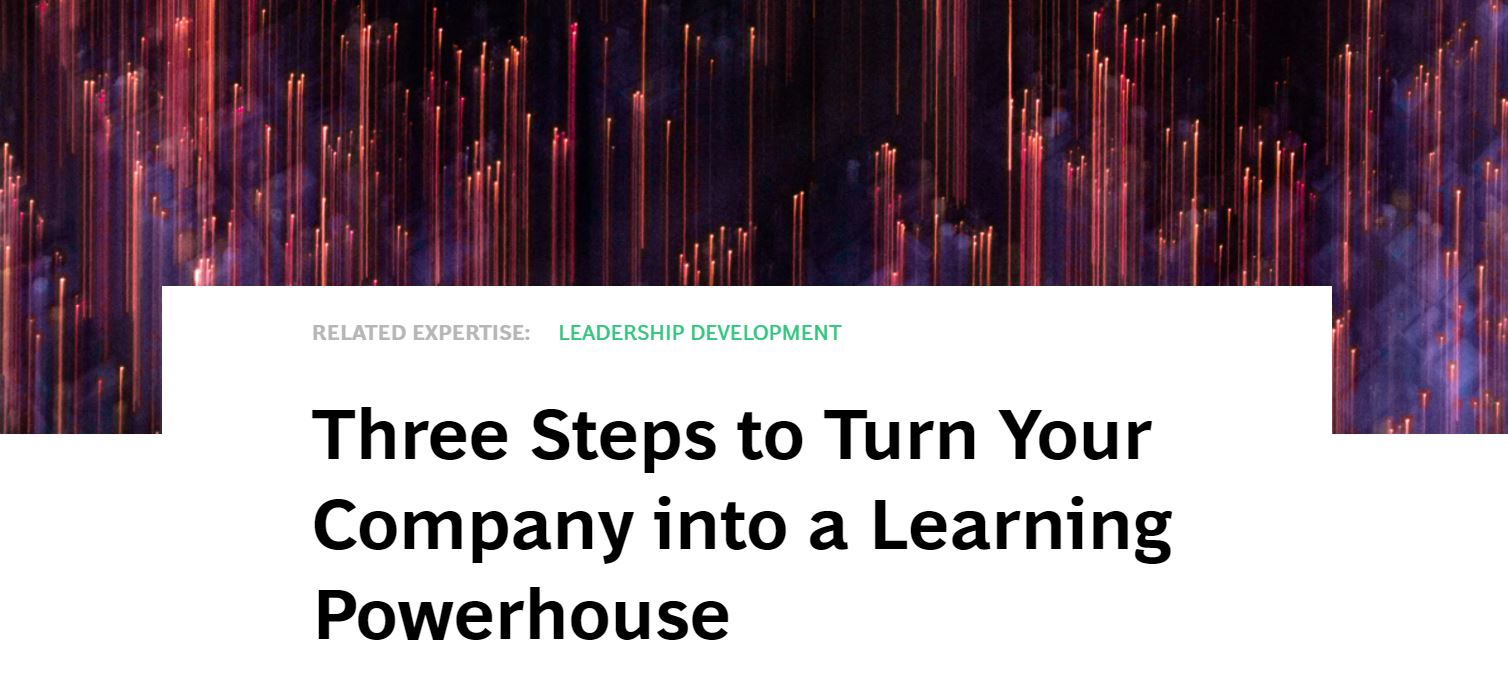We’ve discussed how important employee training and educational development is for an organization’s success. However, recent data continues to indicate that companies are struggling to make these experiences engaging and effective in the long-run. In BCG’s recent report, they outlined three critical steps for leadership to take to improve organizational learning. We’ll explore each of these and more insights below.
The five domains and 18 dimensions
The world’s best corporate learning ecosystems have a few characteristics in common – what BCG considers the framework of five domains and 18 dimensions.

5 domains:
- A refined strategy – the “why” for learning
- A mature learning organization – a learning culture with leadership support
- A high-quality offering – robust library of content delivered in multiple mediums
- A set of enables to support delivery – infrastructure with appropriate measurement tools and technology
- Learnscape integration – network of connections inside the company and outside of corporate learning and development providers
18 dimensions:
Within this, there are 18 dimensions identified by BCG:
- Learning mission
- Learning strategy
- Learning culture
- Business leaders
- L&D organization & and operations
- Learning needs
- Learning content
- Channels and formats
- Pathways and experiences
- Credentials
- Technology and tools
- Workflow design
- Measurement and assessment
- Incentives and accountability
- Individuals
- Teams
- Organization
- Community
Step 1: Check Your Company’s Pulse
How fit is your company in its learning capability? Identify strengths and weaknesses of your company’s learning capability. Seek out the opinions of employees, leadership, and more. Measure the current strength of learning capabilities against a set of KPIs.
Step 2: Rate Your Company
CEOs can begin to gauge how their company compares to its peers, rivals, and the world’s best learning companies. Companies will fall into one of these four maturity categories:
- Starter – not yet developed even the most basic building blocks of a learning ecosystem (7% of those surveyed)
- Adopter – adopted some basic building blocks, but have significant shortcomings in their learning environment (41% surveyed)
- Performer – well on their way to becoming world-class learning companies, having developed the majority of the necessary building blocks (35% surveyed)
- Leader – put learning at the core of their strategy and culture (17% surveyed)
Step 3: Transform Your Business
From the foundation built in steps 1 and 2, companies can create and follow a clear roadmap moving forward. The learning ecosystem roadmap should guide every step of the transformation. This can also be used to measure outcomes and incorporate learning activities into day-to-day operations, things that are typically weaknesses across industries and business types.
Conclusion
BCG’s latest study offers guidance on how companies can improve their learning capabilities and ensure widespread adoption in the age of COVID-19. Head over to their website if you’d like a more in-depth analysis of their findings as well as case study examples.
For more innovation and design thinking resources, continue to our blog.
